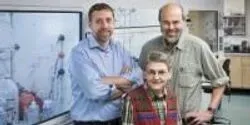Biological Sciences

Wanting to lose weight or quit smoking are often resolutions made at the beginning of the New Year. One University of Alabama at Birmingham wellness expert says there is a key ingredient to being successful health-wise in the coming year.

The southeastern United States is a natural laboratory for scientists studying how chemicals emitted by human activities and trees interact with each other and affect air quality and climate. A new study has found that certain emissions from cars and coal-fired power plants promote processes that transform naturally occurring emissions from trees into organic aerosols. Organic aerosols make up a substantial fraction of ambient particulate matter (PM) that can affect climate, air quality and human health.

The world owes a debt of gratitude to Simon Fraser University (SFU) biologist Regine Gries. Her arms have provided a blood meal for more than a thousand bedbugs each week for five years while she and her husband, biology professor Gerhard Gries, searched for a way to conquer the global bedbug epidemic.

Scientists at the University of Cambridge working with the Weizmann Institute have created primordial germ cells – cells that will go on to become egg and sperm – using human embryonic stem cells. Although this had already been done using rodent stem cells, the study, published Dec. 24 in the journal Cell, is the first time this has been achieved efficiently using human stem cells.

Open any introductory biology textbook and one of the first things you’ll learn is that our DNA spells out the instructions for making proteins, tiny machines that do much of the work in our body’s cells. Results from a study published on Jan. 2 in Science defy textbook science, showing for the first time that the building blocks of a protein, called amino acids, can be assembled without blueprints – DNA and an intermediate template called messenger RNA (mRNA). A team of researchers has observed a case in which another protein specifies which amino acids are added.

Instead of an apple, could a hug-a-day keep the doctor away? According to new research from Carnegie Mellon University, that may not be that far-fetched of an idea.

Women exposed to high levels of fine particulate matter specifically during pregnancy—particularly during the third trimester—may face up to twice the risk of having a child with autism than mothers living in areas with low particulate matter, according to a new study from Harvard School of Public Health (HSPH). The greater the exposure, the greater the risk, researchers found. It was the first U.S.-wide study exploring the link between airborne particulate matter and autism.

For its 2014 BioArt Awards, the Federation of American Societies for Experimental Biology (FASEB) awarded top honors for an image produced by postdoctoral fellow Sabriya Stukes and processed by Hillary Guzik in the Albert Einstein College of Medicine's Analytical Imaging Facility.

Forgetfulness, it turns out, is all in the head. Scientists have shown that fading memory and clouding judgment, the type that comes with advancing age, show up as lost and altered connections between neurons in the brain. But new experiments suggest an existing drug, known as riluzole and already on the market as a treatment for ALS, may help prevent these changes.












